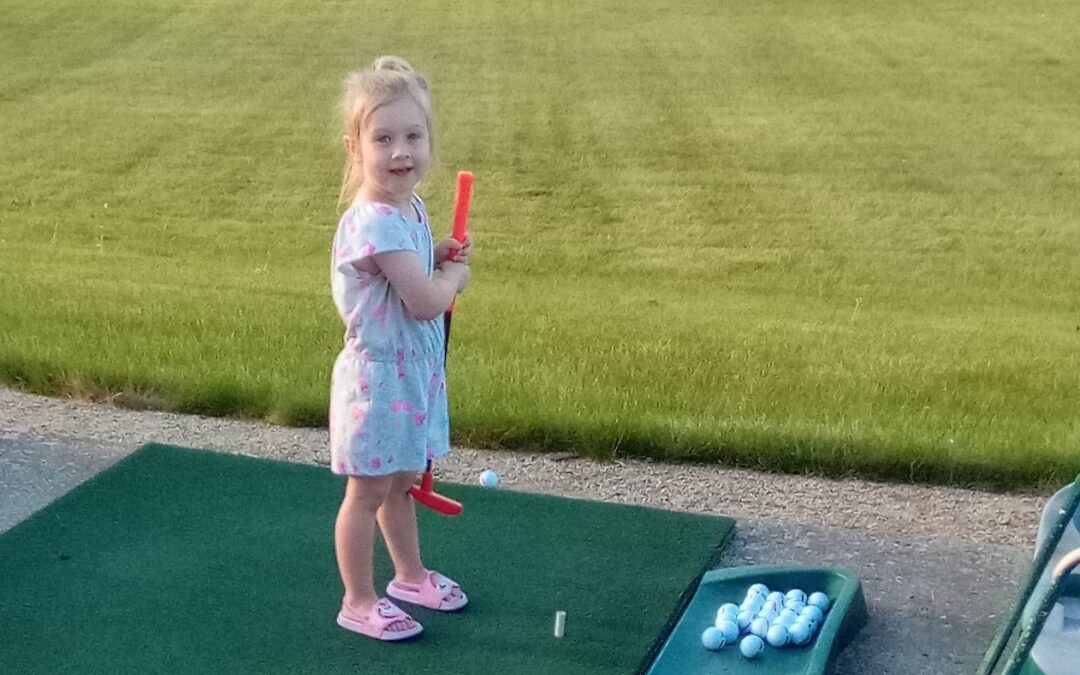
Hillside Princess
Hillside Golf welcomes all, from the youngest enthusiasts to the experienced champions. And occasionally, we’re graced with a visit from the Hillside Princess! Thanks for stopping by, we eagerly await your return!

Hillside Golf welcomes all, from the youngest enthusiasts to the experienced champions. And occasionally, we’re graced with a visit from the Hillside Princess! Thanks for stopping by, we eagerly await your return!

Today we honor the courageous men and women who made the ultimate sacrifice to serve our great nation.

Mothers are the unsung heroes of the game of golf. While their names may not be on the leaderboard or in the headlines, their influence on the sport is undeniable. From encouraging their children to take up the game to supporting them through every swing, moms have played a vital role in the growth and success of golf.
For many golfers, their first exposure to the sport came from their mothers. Whether it was taking them to the driving range, putting green, or even mini-golf course, moms have been instrumental in introducing their children to the game. They have spent countless hours patiently teaching the fundamentals, from how to grip the club to how to read the green. Without their guidance and support, many young golfers may never have discovered their love for the sport.
But it’s not just about getting kids started in golf. Moms continue to be a driving force throughout their children’s golf careers. They are there for every tournament, cheering from the sidelines, offering words of encouragement and support, and providing a shoulder to cry on after a tough round. They understand the ups and downs of the game and know just what to say to keep their children motivated and focused.
Moms also play a vital role in the professional golf world. They are the wives and mothers of the top players in the world, providing unwavering support and love to their loved ones as they travel the globe to compete. They are often the unsung heroes of the sport, making countless sacrifices to allow their partners or children to pursue their dreams on the course.
Moms are also making an impact on the golf industry as a whole. Women make up a significant portion of the golfing population, and moms are no exception. They are businesswomen, entrepreneurs, and industry leaders, bringing their unique perspectives and insights to the game. From designing innovative golf products to organizing tournaments and events, moms are making their mark on the sport in countless ways.
To all the moms out there who have helped make golf the great sport it is today, thank you. Your impact on the game and on the lives of those you love is immeasurable.

The golf swing is a complex movement that requires a combination of skill, technique, and physical fitness. But at its core, the golf swing is a perfect example of the laws of physics in action. From the forces acting on the golf ball to the mechanics of the swing itself, understanding the physics of a golf swing can help you improve your game. Here’s a closer look at some of the physics of a golf.
The Golf Ball
The golf ball is a small, round object that weighs approximately 1.62 ounces. When you hit the ball, several forces come into play that affect its flight. The first is the force you apply to the ball when you make contact. This force is known as the impact force and is determined by the speed of your clubhead at impact and the mass of the ball.
The second force that affects the flight of the ball is air resistance. As the ball moves through the air, it experiences resistance from the air around it, which slows its forward motion. The amount of air resistance the ball experiences is influenced by several factors, including the speed of the ball, the density of the air, and the shape of the ball.
Finally, there’s the force of gravity. The gravitational force is constantly pulling the ball towards the ground, which is why the ball eventually falls back to earth. But the angle at which the ball is hit can affect the amount of time it spends in the air and the distance it travels.
The Golf Swing
The golf swing is a complex movement that requires the coordination of several muscles, joints, and body parts. But at its core, the golf swing is about transferring energy from your body to the clubhead, which in turn transfers the energy to the ball. Here’s a closer look at the physics of the golf swing.
When you start your swing, you’re building potential energy in your body. As you begin your downswing, this potential energy is converted into kinetic energy, which is the energy of motion. This kinetic energy is transferred from your body to the clubhead, which is then transferred to the ball at impact.
The speed at which the clubhead travels at impact is determined by the speed of your downswing, which is influenced by several factors, including the length of your backswing, the angle of your wrists, and the rotation of your hips and shoulders.
Finally, the angle at which you hit the ball can affect the trajectory and distance of your shot. A steep angle of attack will result in a higher trajectory, while a shallow angle of attack will result in a lower trajectory. The angle of attack is influenced by several factors, including the loft of the clubface, the position of the ball in your stance, and the angle of your swing path.
Understanding the physics of a golf swing can help you improve your game. From the forces acting on the golf ball to the mechanics of the swing itself, the game of golf is a perfect example of the laws of physics in action. So, the next time you’re at the driving range, take a moment to appreciate the complex and fascinating physics behind the perfect golf swing.

When most golfers think of practicing at the driving range, they likely picture themselves hitting long drives down the fairway. While hitting long drives is certainly an important part of the game, mastering your short game is equally important. Here are some of the benefits of practicing your short game at the driving range:
Lower scores: Improve your chipping and putting accuracy to make those crucial shots that save you strokes and lower your overall score.
Improved confidence: The more you practice, the better you’ll get, and the more confident you’ll feel on the course. You’ll be able to take on tough shots with ease and make better decisions under pressure, leading to a more enjoyable round of golf.
Increased versatility: Learn a variety of shots, such as high, soft shots and low, running shots, to handle different situations and types of lies on the course.
Stress reduction: Work through those struggles and build a more consistent and reliable short game, reducing stress on the course.
Time-efficient: Set up a small area at the driving range to work on your chipping and putting, and get in a lot of practice in a short amount of time.
These are just a few of the benefits of practicing your short game at the range. By regularly practicing your short game, you can develop a reliable and consistent technique that will enable you to handle a variety of situations and types of lies on the course, ultimately leading to a more enjoyable and successful round of golf.

Golf is a sport that requires skill, patience, and practice. If you are new to golf, one of the best ways to improve your game is by spending time at the driving range. Here are some tips to help beginners make the most out of their time at the golf driving range:
Start with the basics: Before you start hitting balls, make sure you have a solid understanding of the basic golf swing. You can find many instructional videos and articles online that can help you learn the proper grip, stance, and swing technique.
Warm up: Spend a few minutes stretching before you start hitting balls. Warming up can help prevent injuries and ensure that you get the most out of your practice session.
Start with short irons: Begin by hitting some short irons, such as a pitching wedge or 9-iron. These clubs are easier to hit and will help you build confidence.
Focus on technique, not distance: When you are starting out, don’t worry too much about how far you are hitting the ball. Focus on hitting the ball straight and with good technique. Distance will come with practice.
Use alignment aids: Many golf ranges have alignment aids, such as markers or target flags, that can help you aim your shots. Take advantage of these aids to improve your accuracy.
Take breaks: Don’t overdo it. Take breaks to rest your muscles and stay hydrated. This will help prevent fatigue and ensure that you are making the most out of your practice time.
Analyze your shots: Take a few moments to analyze your shots after each swing. Did the ball go straight? Did it hook or slice? This feedback can help you make adjustments to your technique and improve your game.
Remember, practice makes perfect. Spending time at the driving range is an excellent way to improve your golf game. With patience and persistence, you can become a skilled golfer.